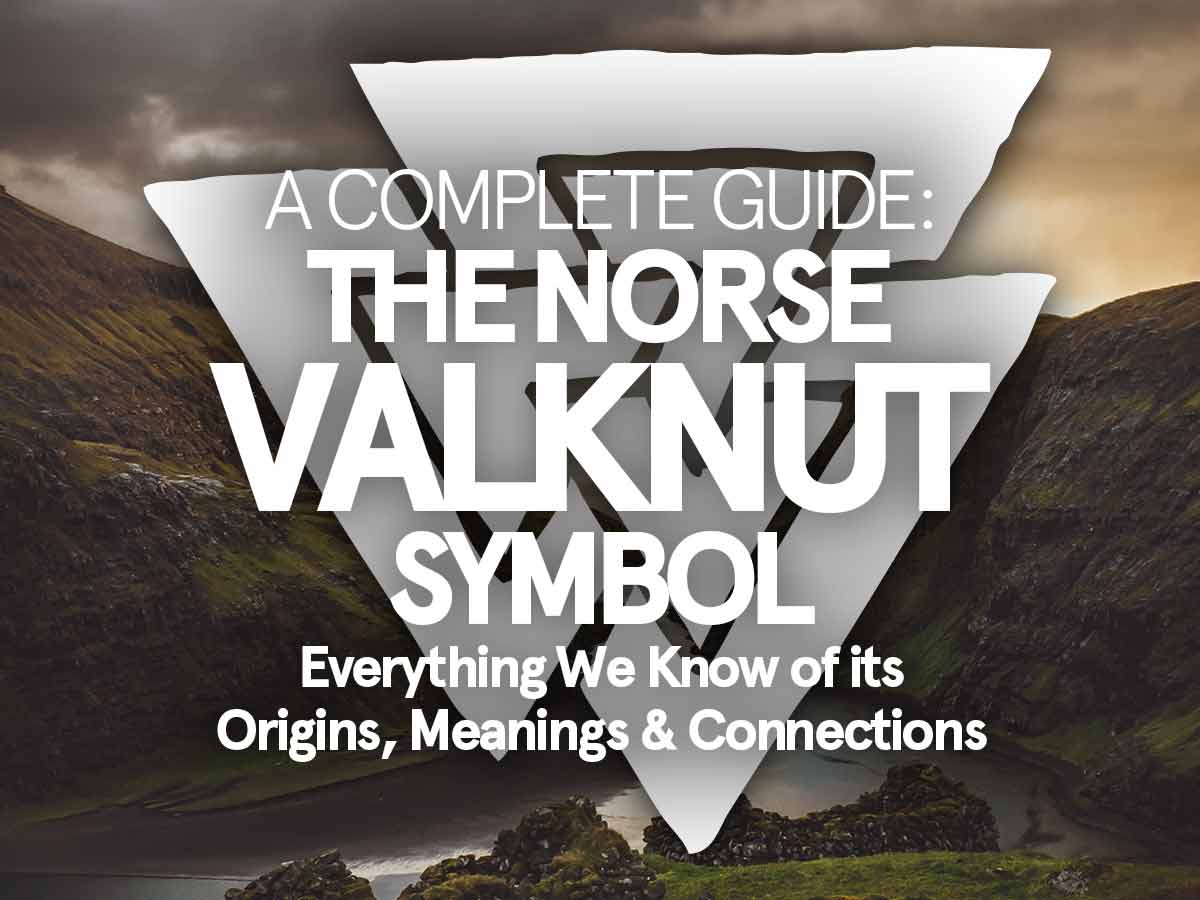The symbol we today call Valknut, or Valknútr, has long captured the fascination of people interested in Norse mythology and Viking culture. With its distinctive interwoven triangles, this symbol has been found on a variety of ancient artifacts, and has been the subject of much speculation and study. But what does the Valknut actually mean? Was it actually called Valknútr? Where did it originally come from? And was it really used by the Vikings? Let’s delve into the mysterious origins and meanings of the Valknútr and explore its place in Norse mythology, as well as its links to other symbols and enduring legacy in our modern world.
ℹ️ As you will learn in this article, the symbol we call Valknut may have had a completely different name during the Viking Age, i.e. when it started appearing on stones, jewelry, and wooden objects in and around Scandinavia. What that name is we do not know, so for the sake of simplicity I will refer to it as the Valknut throughout the article.
- The Appearance of the Valknut, Earliest Known Use & Associations
- Valknut Etymology: Origins and Alternative Names
- What Does the Valknut Actually Mean and Symbolize? Explaining All the Theories
- Theory 1: A Symbol of the Power of Odin to Bind and Unbind the Fates of Men ("the Historian Theory")
- Theory 2: A Symbol of The Heart of Hrungnir or Heart of the Slain ("the Heart Theory")
- Theory 3: A Symbol of the Ideal, Steady Heart of the Brave Slain Hero, Dead Warriors, or That of a Worthy Adversary ("the Romantic Theory")
- Theory 4: A Symbol of Life, Death, and Eternity ("the Universal Theory")
- Theory 5: A Germanic Symbol of Prestige & Riches ("the Scaetta Theory")
- Theory 6: A Symbol of The Nine Worlds ("the Neo-Pagan Theory")
- Different variations of the Valknut symbol
- Symbols Connected to the Valknut
- Valknut Tattoo Designs
- The Valknut in Modern-day Logotypes
- Misappropriation of the Valknut
- Common Questions

The Appearance of the Valknut, Earliest Known Use & Associations
The Valknut is a type of Triquetra composed of three interlocking triangles and appears on a variety of objects from the archaeological record of the ancient Germanic peoples, including primarily the Norsemen but also Anglo-Saxons.
It is often associated with Odin — the wise All-father and God of war, death, and magic in Norse mythology — as it is often depicted around and in connection to him. Furthermore, it is believed to have been connected to death and sacrifice, and possibly also a Viking Age death cult, as it often appears specifically in connection with burials, sacrifices, and death.
The earliest known depiction of the Valknut is on the 8th century CE Tängelgårda and Stora Hammars stones found in Lärbro, Gotland, Sweden.

On the Tängelgårda stone, three different Valknutr are inscribed directly next to Odin, which is also seen as the earliest connection between the symbol and the Norse all-father.
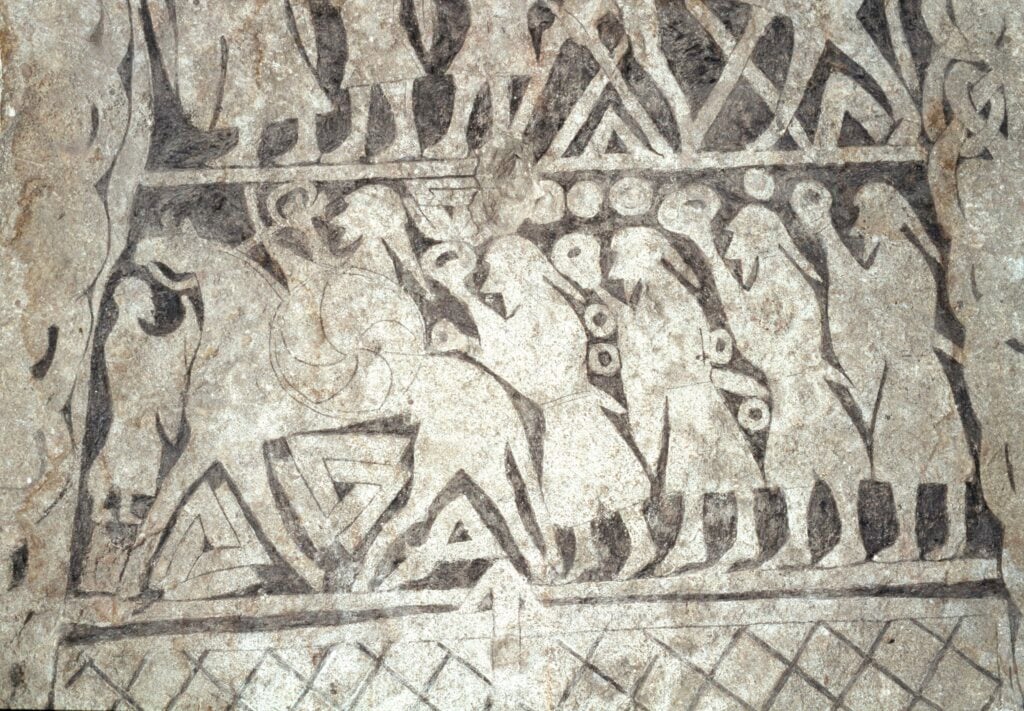
The symbol also seems to be connected to death, as it appears on one of the Stora Hammar Stones above an altar where a man is sacrificed, with two ravens flying around it (possibly Odin’ Hugin and Munin). Some scholars have connected the altar in this scene with that of a death cult, similar to one found on the Elgesem runestone from around 400 CE.
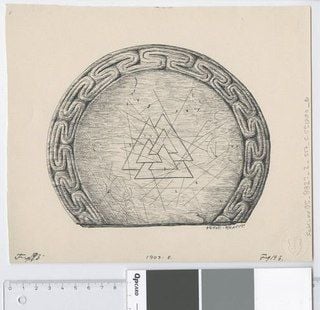
Other examples from the same period include multiple appearances on the Oseberg Ship Burial and Tapestry (c. 800-825 CE) in Norway, and the Nene river ring found in England and dated to the 8th-9th century CE.
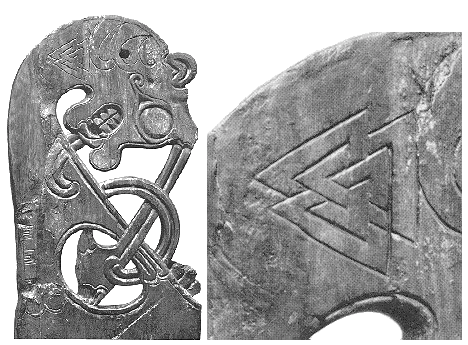
Despite having found the symbol on so many Viking Age runestones in and around Scandinavia, the meaning of the symbol is still uncertain to historians, and it is unclear as well what exactly it symbolized for the Vikings.
However, many believe that it was used to symbolize life and death, as well as a connection to the Valkyries, the female warriors in Norse mythology. Today, the Valknut is often used in tattoos and art to signify courage and strength. Despite its use by some supremacist groups, the Nordic Valknut is still seen as a symbol of courage and power, and remains an authentic part of Norse mythology.
Valknut Etymology: Origins and Alternative Names
The name Valknútr is actually a fairly recent Norwegian name for the symbol (first attributed to this symbol in 1945), and is made up of two words, valr (“warrior”) and knútr (“knot”) — so it would literally mean “knot of warriors”. Only, we don’t actually have any evidence to suggest that the Norsemen used to call it this.
The Norwegian name is shared with the “looped square” symbol (⌘) which is a symbol also used to designate places of interest in the Nordics (and also seen on picture stones from the Iron and Viking Ages) and other European countries.
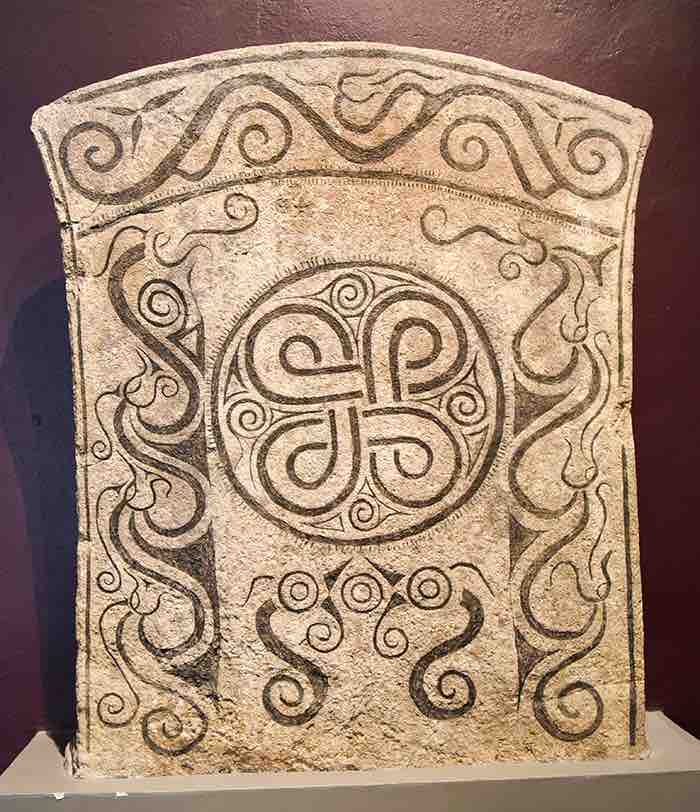
So what did the Vikings actually call the symbol? In the primary sources, most Norse historians connect it to phrases such as “the heart of the slain”, “the heart of Vala”, “the heart of Hrungnir”, or simply “Odin’s knot”.
However, there is no clear connection to this symbol specifically, so we are left in the dark on what its true name actually was at the time, if it even had one.
What Does the Valknut Actually Mean and Symbolize? Explaining All the Theories
Popular theories about the meaning of the Valknut are diverse, ranging from being tied (hah!) to Odin and his powers, a symbol for reincarnation, a representation of courage and bravery in battle, or even the heart of a brawling giant who is slain by Thor.
As you have probably guessed by know, there is no definitive meaning that historians can agree on, as there is very little known about the symbol from archeological and written sources.
Still, there are Let’s go through these possible meanings, one by one:
Theory 1: A Symbol of the Power of Odin to Bind and Unbind the Fates of Men (“the Historian Theory”)
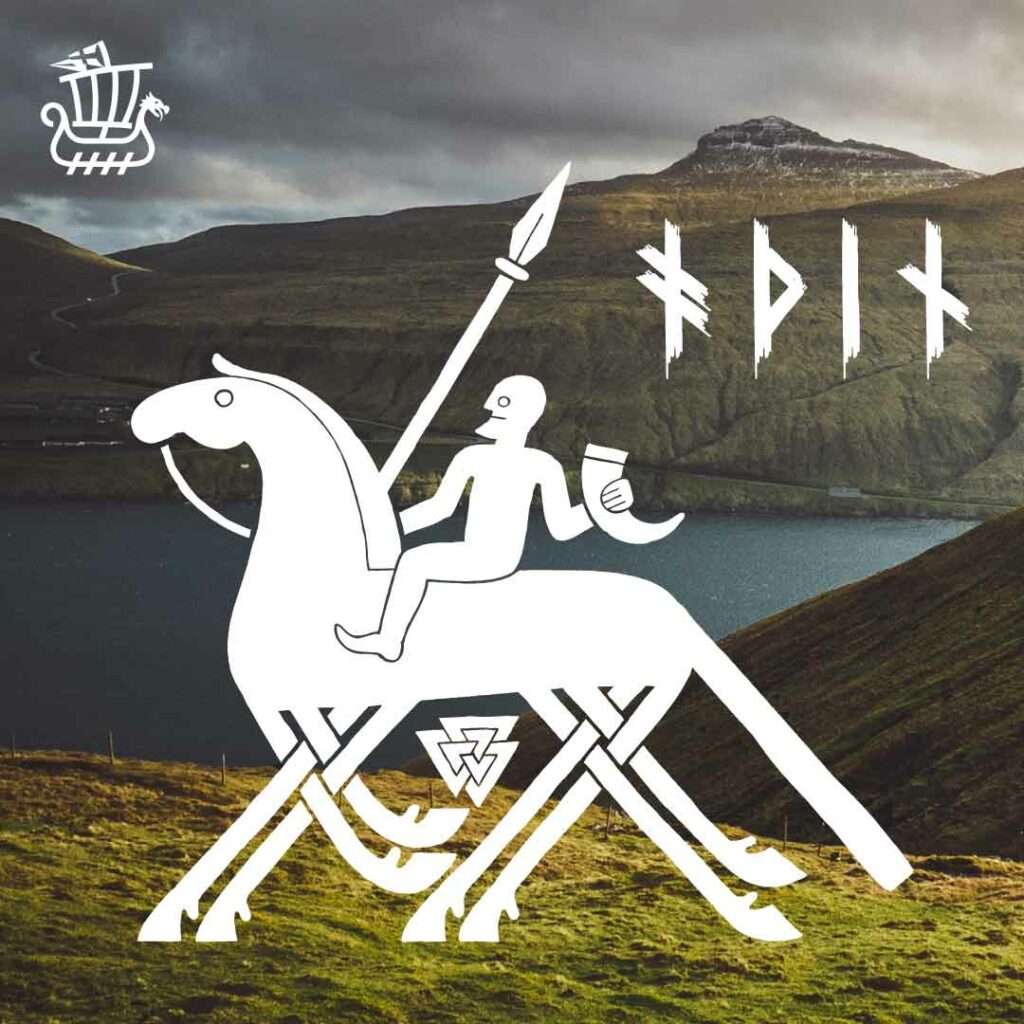
beside the figure of Odin on his horse shown on several memorial stones there is a kind of knot depicted, called the valknut, related to the triskele. This is thought to symbolize the power of the god to bind and unbind
– Page 147 in Gods and Myths of Northern Europe, HR Ellis Davidson
The most reliable historians on the subject seem to lean towards the Valknutr symbolizing the power of Odin to bind and unbind the fates of men and specifically to death and sacrifice, including by English scholar and Celtic, Anglo-Saxon and Old Norse specialist HR Ellis Davidson in her Gods and Myths of Northern Europe.
Odin had the power to lay bonds upon the mind, so that men became helpless in battle, and he could also loosen the tensions of fear and strain by his gifts of battle-madness, intoxication, and inspiration. Symbols resembling this knot of Odin are found beside figures of the horse and the wolf on certain cremation urns from early heathen cemeteries in East Anglia. We know Odin’s connection with cremation, and it does not seem unreasonable therefore to associate them with Woden, god of the dead in Anglo-Saxon England.
– Page 147 in Gods and Myths of Northern Europe, HR Ellis Davidson
Theory 2: A Symbol of The Heart of Hrungnir or Heart of the Slain (“the Heart Theory”)
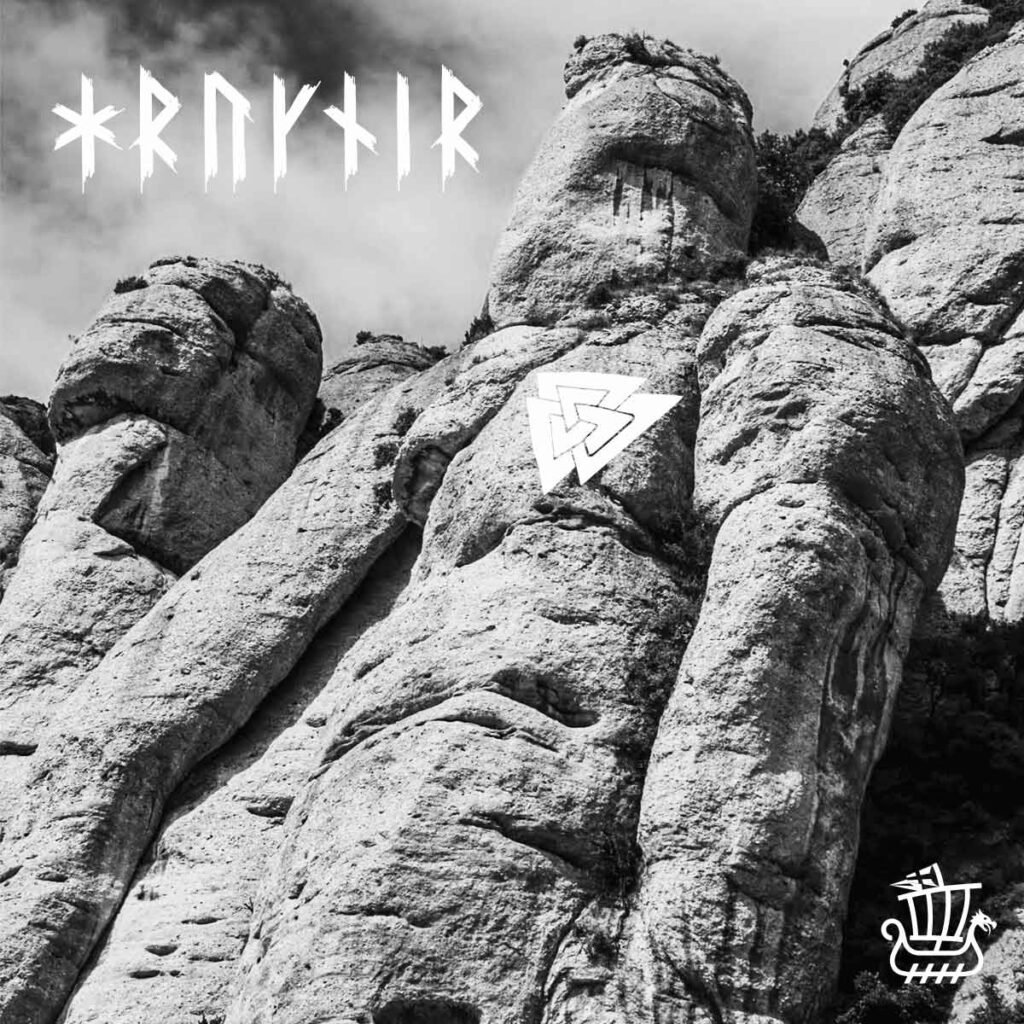
Hrungnir was a Norse jötunn (giant) who was described as made of stone and incredibly big and strong. The name translated to “the brawler” in Old Norse, and brawl he did indeed in the story of the horse race in Skáldskaparmál.
Hrungnir had a heart that was famous. It was made of hard stone with three sharp-pointed corners just like the carved symbol hrungnishjarta [Hrungnir’s heart].
– Chapter 17 of the 13th century Prose Edda book Skáldskaparmál
In this story, Hrungnir wagered with Odin on whose horse was the fastest — Sleipnir or Gullfaxi. When Hrungnir’s Gullfaxi lost he then barges into Valhalla, becomes extremely drunk and tries to fight every Æsir he can find.
Alas, this brawl only finds him facing the hammer and rage of Thor, who ends up slaying Hrungnir after a fierce duel.
Theory 3: A Symbol of the Ideal, Steady Heart of the Brave Slain Hero, Dead Warriors, or That of a Worthy Adversary (“the Romantic Theory”)
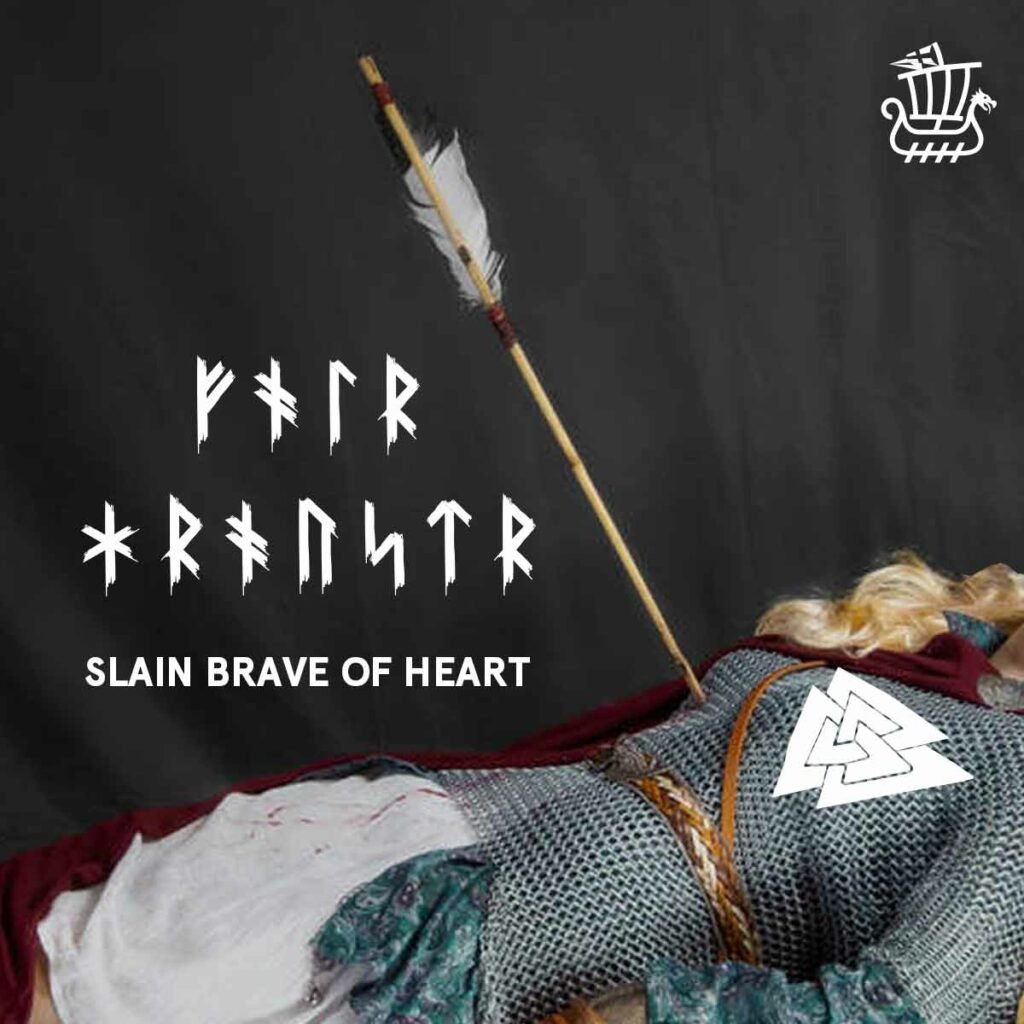
Eirik Westcoat, MA in Viking & Medieval Norse Studies and PhD in Icelandic Literature goes on to propose that the Valknut may represent “the ideal, steady heart of the brave slain hero, dead warriors, or that of a worthy adversary.”
His approach is more so of a poet, and why not considering the primary sources were first written down in poetic form! Still, it is a romantic notion and one that carries a lot of attraction.
Theory 4: A Symbol of Life, Death, and Eternity (“the Universal Theory”)
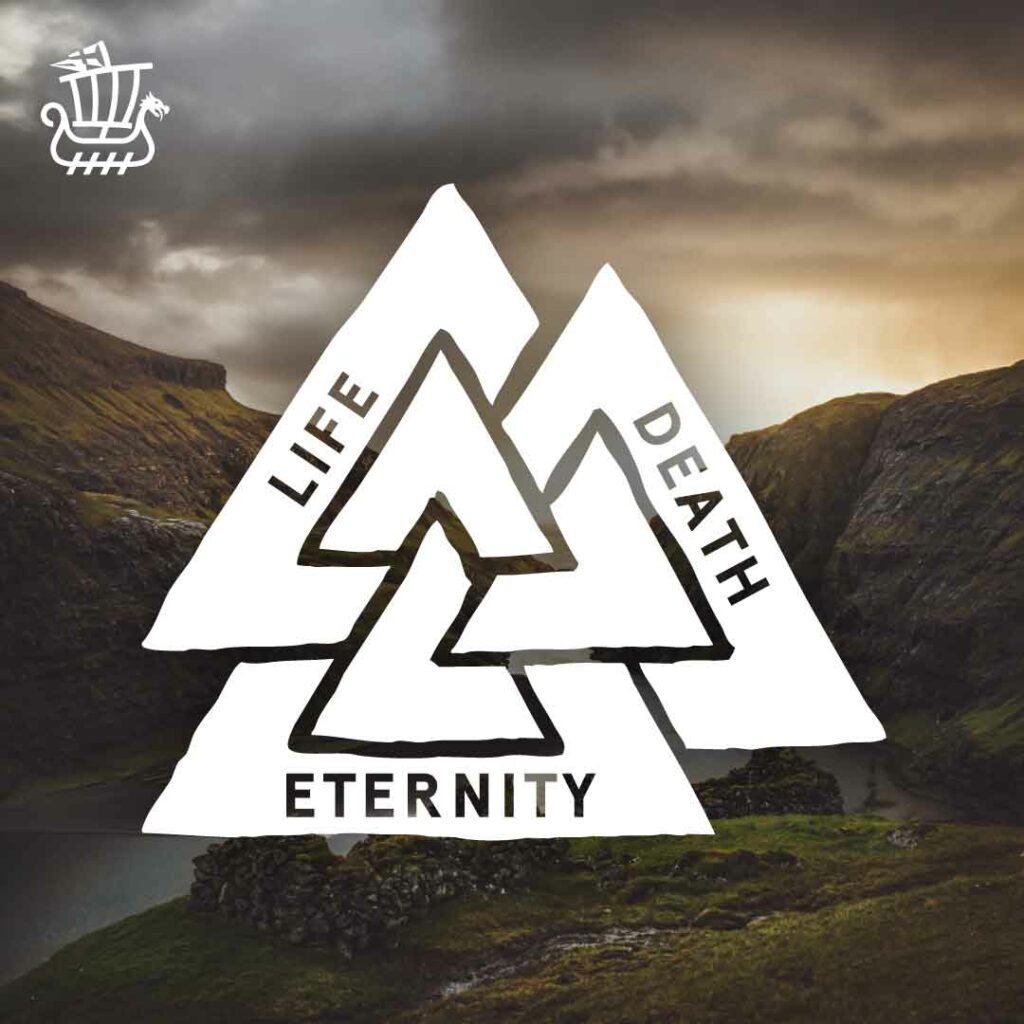
And then there are some scholars who believe that the Valknut is a symbol of life and death, similar to other Triquetra knots.
This is a more universal approach to its symbolism, and considering it has a lot of similarities with symbols that have been found all over the world for almost 5000 years (see further down the article), there is certainly an argument for this approach.
Theory 5: A Germanic Symbol of Prestige & Riches (“the Scaetta Theory”)
Triquetras (and the Valknut specifically) have been found on Scaettas (coins) minted in various different Germanic cultures, including in the Norse town of Ribe in Denmark and in the alternating Anglo-Saxon and Norse Kingdom of Northumbria in England.

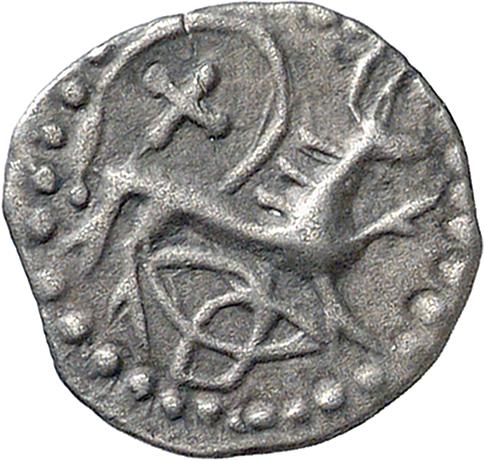
It is unclear why the symbols were included on the coins, but it seems probable that they were meant to symbolize prestige and riches, as symbols of coins often do.
Theory 6: A Symbol of The Nine Worlds (“the Neo-Pagan Theory”)

The symbol has also seen a resurgence in recent times among Neo-pagans, who view each corner of the bigger triangles and each of the smaller triangles as symbolizing one of the nine worlds of the Norse myths:
- Asgard
- Vanaheim
- Midgard
- Jötunheim
- Alfheim
- Helheim
- Svartalfheim
- Niflheim
- Muspelheim
Different variations of the Valknut symbol
The symbol appears in two traditional, topologically distinct forms:
The Unicursal Valknut
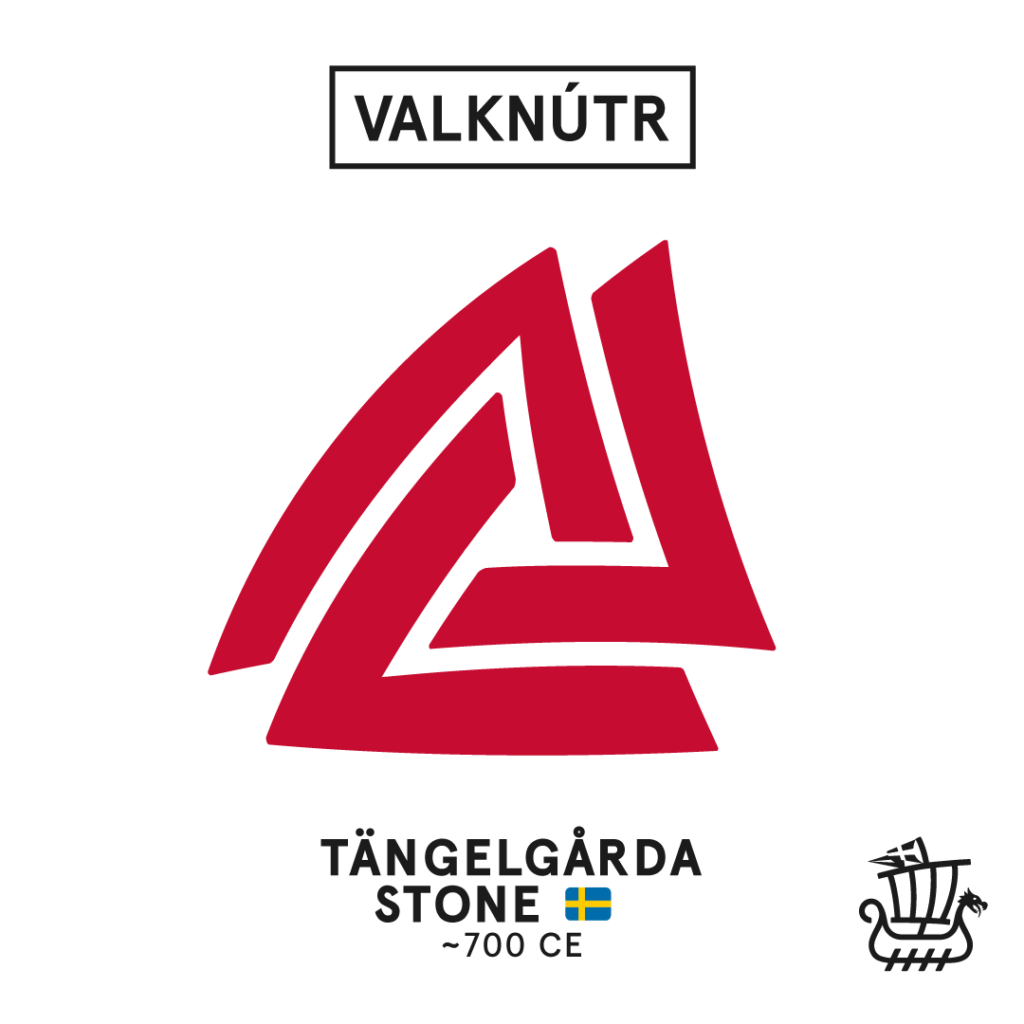
The Tricursal Valknut

Symbols Connected to the Valknut
The Valknut is inherently connected to other Triquetra symbols, commonly seen in Norse, Celtic, Christian, Greek, Roman and even Indian imagery dating as far back as 3000 BCE. These symbols are usually connected to the concept of eternity, and are very popular among Neo-pagans as well as in pop culture in general.
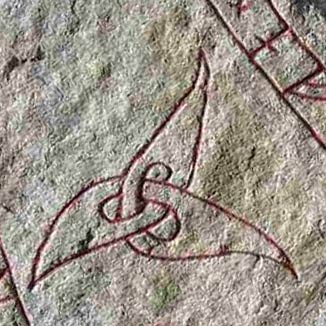
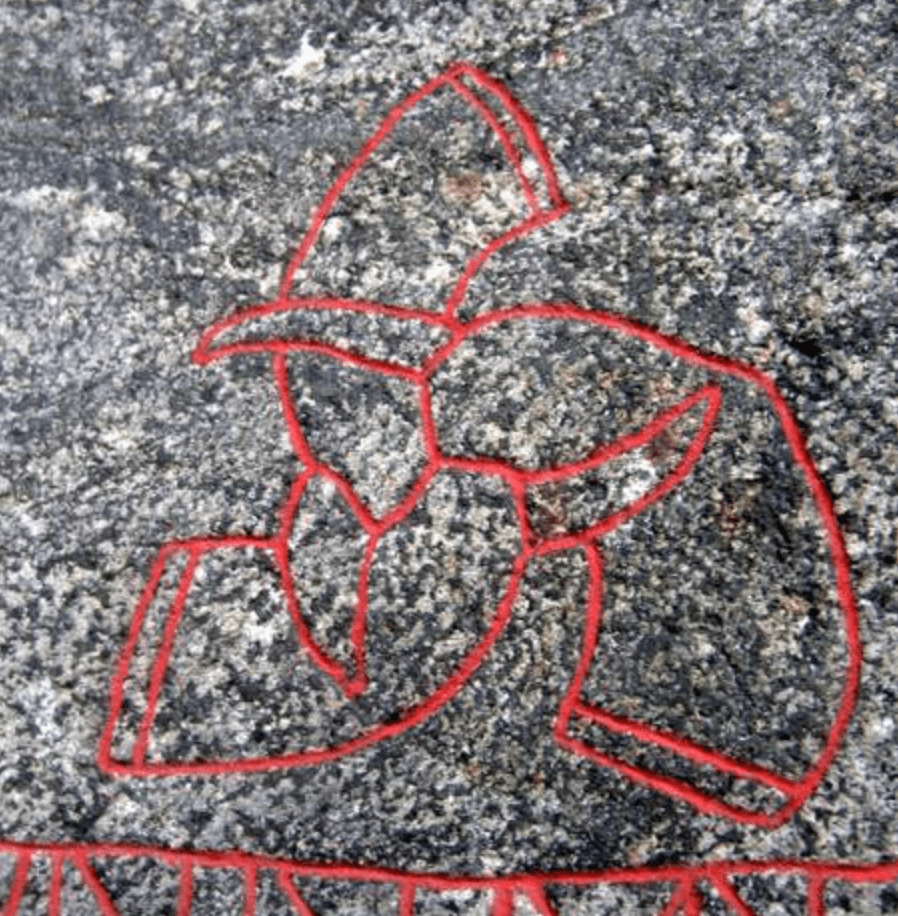
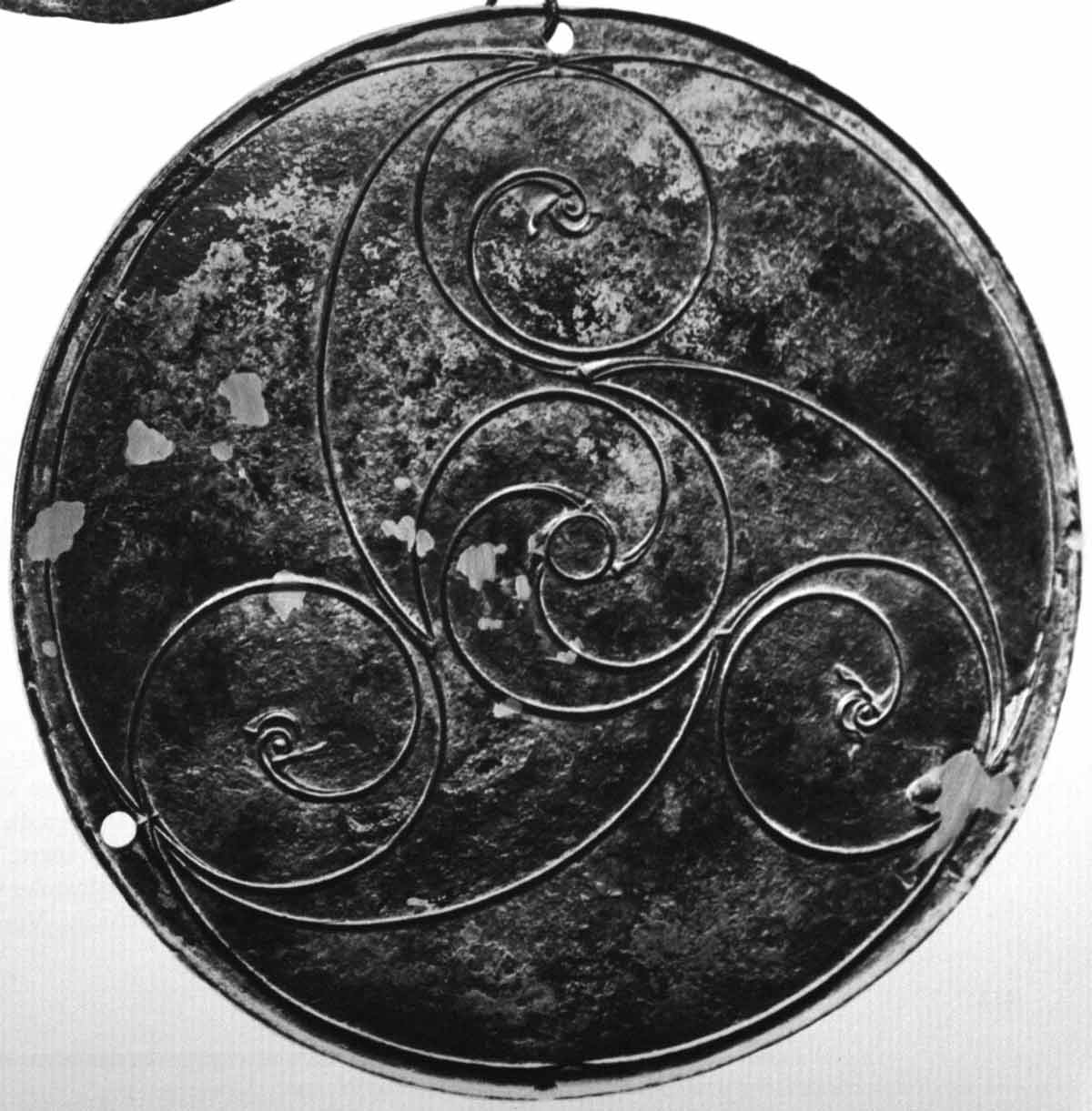
Due to its design it is also associated with the Triskele, or Triskelon, symbols that include three symmetrical legs or spirals that are interconnected, and that have similarly been used in Norse, Celtic, Roman and Greek imagery. It is famously a part of the Isle of Man’s flag, and island which was under Norse control for most of the Viking Age, and even into the Late Middle Ages.
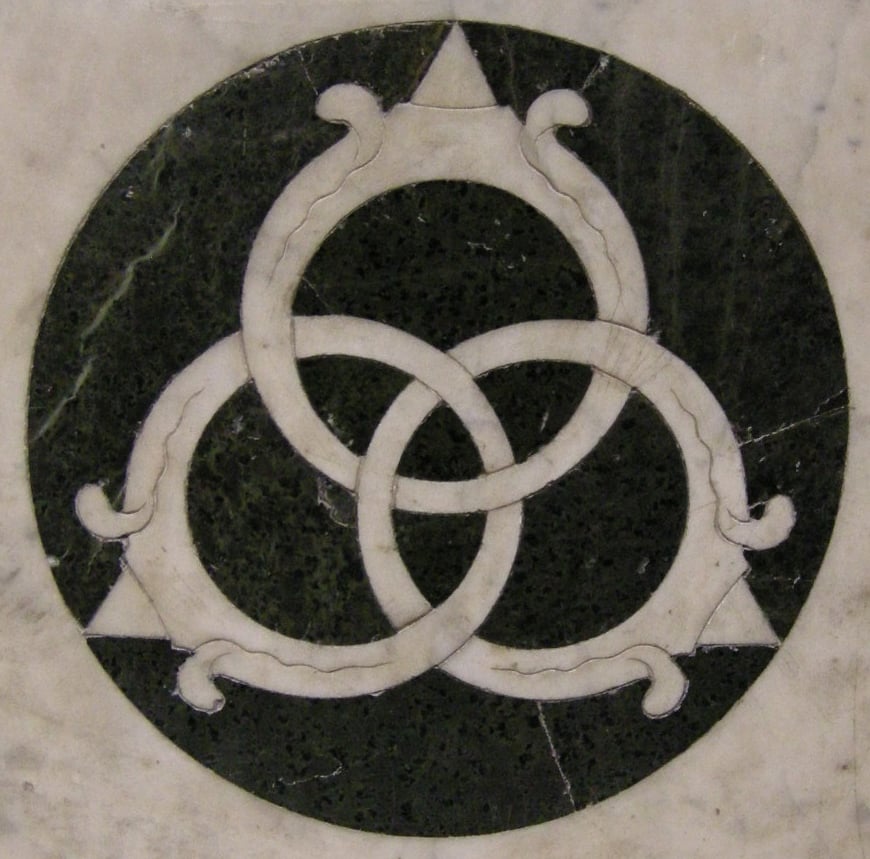
The Borromean rings of Italy are a more modern variety of the Triquetra, used by the house of Borromeo as their coat of arms, as well as by some of the famous Medicis of Firenze.
The Triquetra of Celtic Mythology
The Triquetra of Celtic Mythology is a symbol comprised of three interlocking arcs, believed to signify the connection between the physical, spiritual and celestial realms. This symbol has been found in many ancient artifacts from Celtic cultures, such as jewelry, stone carvings and rune inscriptions. It is often thought to represent the triple goddess in Celtic mythology: the maiden, mother and crone.

In some interpretations, it can also be seen to symbolize life’s interconnectedness or cycles such as birth-life-death or mind-body-spirit. The Triquetra can also be used to represent the trinity of Father-Son-Holy Spirit in modern-day Christianity.
Archaeological examples of this shape have been found all over Europe dating back to pre-Christian times, indicating its importance in Celtic mythology and culture.
Valknut Tattoo Designs
Tattoos featuring the Valknut have become increasingly popular in modern times, often taking on different meanings depending on the wearer (which is totally fine!).
As discussed in this article, the design can be seen as a representation of many things: the cycle of life and death, the powers of Odin, the heart of the slain, and prestige.
In modern times, some also see it as a general symbol of protection, strength, and courage, and for neo-pagans, it usually represent the connection between the nine realms of Norse mythology.
Whatever it may mean to you, Valknut tattoos — and Triquetras more generally — are beautiful works of art that are rooted deep in the histories of many different cultures.
Here are some of my favorite designs of Valknut tattoos:
The Valknut in Modern-day Logotypes
The Valknut may be ancient, but it is still very much present in modern times as a symbol used in logotypes in areas where Norse and Germanic mythology was prevalent.
The German Football Association (Deutsche Fußball Bund)
The German Football Association have featured the Valknut in a sideways position in their official logo since 1926, cleverly designed to make up the letters “DFB” as seen in the oldest and most recent version of the logo:

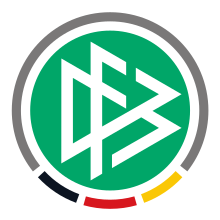
Though the German national team wears a separate logo (with an eagle in it) on their match kits, the symbol is still featured heavily in German football as a whole.


The massive Swedish forestry company SCA

SCA (Skandinaviska Cellulosa Aktiebolaget) is the world’s largest owner of forest land, and I’ve seen the Valknut on paper dispensers my whole life, and even worn and have my children wear their Libero diapers.
Although the logo has undergone a recent redesign, SCA still uses a full-fledged Valknut as their logo, with the characteristic three triangles in a knot:

Misappropriation of the Valknut
The Valknut discussed in this article is at its core a Scandinavian symbol that dates back to the Viking Age, and although it has multiple suggested theories as to its true meaning and symbolism, none of them include hate speech of any kind.
However, as with many other Norse symbols, it has still occasionally been misappropriated by extremist groups in more recent history, such as in Charlottesville, Virginia in 2017 (during an event organized by white nationalists to oppose the removal of Confederate monuments).
It is important to remember that it is much more commonly seen as a way to celebrate Norse or Scandinavian culture, heritage, and mythology. It makes me sad to see that people may associate this and other Norse symbols with extremism.
So, the importance of learning about the actual origins and meanings of Norse seymbols (though they’re sometimes not absolutely clear as in this case) speaks for itself, and I encourage you to display them proudly in appreciation — and not opposition — of cultures, whether it’s your own or others.
Common Questions
Can I wear a Valknut or will it be misinterpreted by others?
While wearing a Valknut is most likely to be seen as an expression of appreciation for and connection to Norse and/or Scandinavian history and culture in general — or as a symbol for some of the many meanings discussed in this article — it should be noted that it could also be misinterpreted by those unfamiliar with its meaning.
For example, some extremist groups in the US have been seen displaying the symbol on flags and similar (e.g. the Charlottesville protests in 2017), but as with many similar groups that have tried to hijack Norse symbols before, these are not their symbols to misappropriate, and it should not discourage you from using the symbol.
Why do people get Valknut tattoos?
Being heavily associated with Norse mythology and Odin in particular, the symbol has a strong spiritual connection to the world of the Vikings and those who feel connected to it in any way.
People may choose to get the tattoo as a mark of appreciation to the lost Norse culture and mythology, or as a sign of their own belief. Others may get the tattoo simply because they are attracted to its aesthetics or enjoy its symbolic complexity.
No matter why someone chooses to get the Valknut tattoo, it is an important piece of artwork that has been a part of this world for a long time.
Is the Valknut authentic?
The Valknut has been found in many artifacts and artworks from the Viking era, including being displayed prominently on many large runestones and smaller pieces of jewelry, but the name “Valknut” is a modern invention that has no historical bearing that we know of.
Though there are many different theories about its meaning — as discussed further up in the article — its true meaning remains shrouded in mystery.
Did Vikings use the Valknut?
The Valknut appears on various runestones dated to the Viking Age so we can safely assume at least some Vikings drew and displayed the symbol. Though it has been associated with Odin and as a symbol of death, we do not know what it meant for the Norsemen specifically.
So although there is clear evidence that the Vikings used the symbol, it is unclear whether they attached any special meaning to it.
Sources:
https://samlingar.shm.se/object/812CA048-CB12-42FD-8922-6498CF13E96A
http://www.diva-portal.org/smash/get/diva2:473141/FULLTEXT01
https://uu.diva-portal.org/smash/get/diva2:581183/FULLTEXT01.pdf
https://www.britishmuseum.org/collection/object/H_1855-1115-1
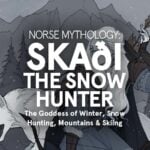 Skaði: Norse Goddess of Winter, Mountains & Hunting
Skaði: Norse Goddess of Winter, Mountains & Hunting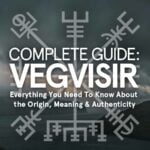 Vegvisir: A Complete Guide (Origins, Meaning & Accuracy)
Vegvisir: A Complete Guide (Origins, Meaning & Accuracy)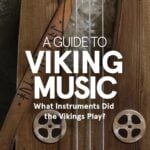 Viking Music: What Instruments Did the Vikings Play? (Examples)
Viking Music: What Instruments Did the Vikings Play? (Examples)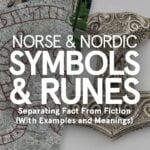 Old Nordic Symbols: Norse Runes & Viking Ornaments (Meanings & Examples)
Old Nordic Symbols: Norse Runes & Viking Ornaments (Meanings & Examples)

